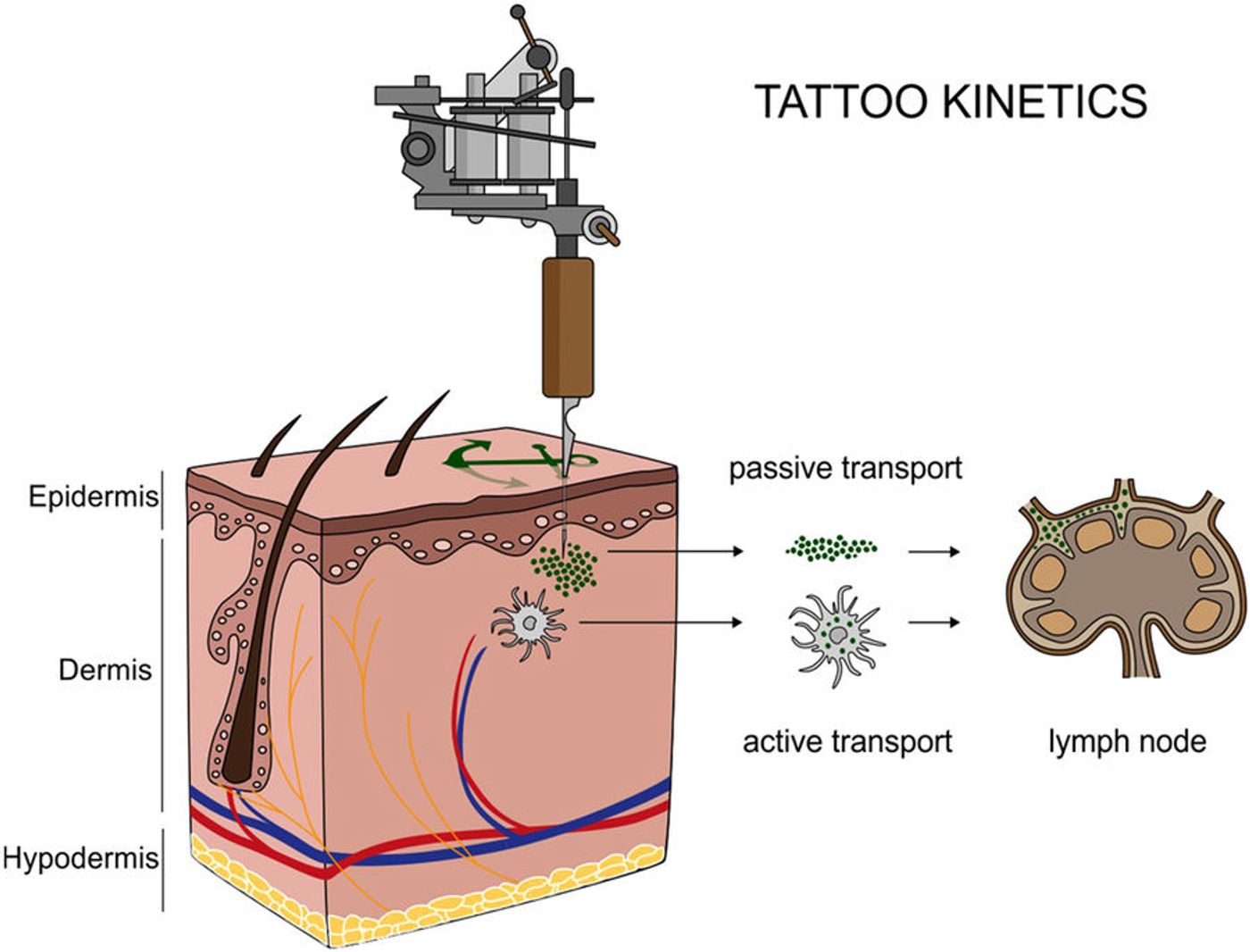Researchers have found evidence that most tattoo inks contain tiny particles that can migrate away from the site of application to the lymph nodes. This new data is the first indication that inorganic and organic pigments and impurities, some of which are considered toxic, can travel around the body; it is also the first characterization of pigmented tissue.
Because tattoos are considered completely cosmetic and voluntary procedures, there is not a reasonable scientific justification for using animal models to investigate the potential risks of tattoos thoroughly. It has been simply assumed that any tattoo that is applied with sterile equipment is a safe procedure. Learn more about the work, which was
published in the journal Scientific Reports, from the video.
"When someone wants to get a tattoo, they are often very careful in choosing a parlor where they use sterile needles that haven't been used previously. No one checks the chemical composition of the colors, but our study shows that maybe they should," commented study author Hiram Castillo, a scientist at the European Synchrotron Radiation Facility (ESRF).
Organic pigments are a common ingredient in many tattoo inks, which might also contain preservative chemicals, or dangerous heavy metal contaminants like cobalt, chromium, manganese or nickel. Carbon black is the most common tattoo ink ingredient, and titanium dioxide is the second most common. Because titanium dioxide is white, it’s often used to modify other colors to create new shades. While titanium dioxide is also typically used in many other products, like sunscreen, foods, and paints, it can delay tattoo healing and cause itching and skin elevation or irritation.
"We already knew that pigments from tattoos would travel to the lymph nodes because of visual evidence: the lymph nodes become tinted with the color of the tattoo," said Bernhard Hesse, a visiting scientist at ESRF.
"It is the response of the body to clean the site of entrance of the tattoo. What we didn't know is that they do it in a nano form, which implies that they may not have the same behavior as the particles at a micro level. And that is the problem: we don't know how nanoparticles react,” concluded Hesse.
A graphic schematic from the work is shown above.










